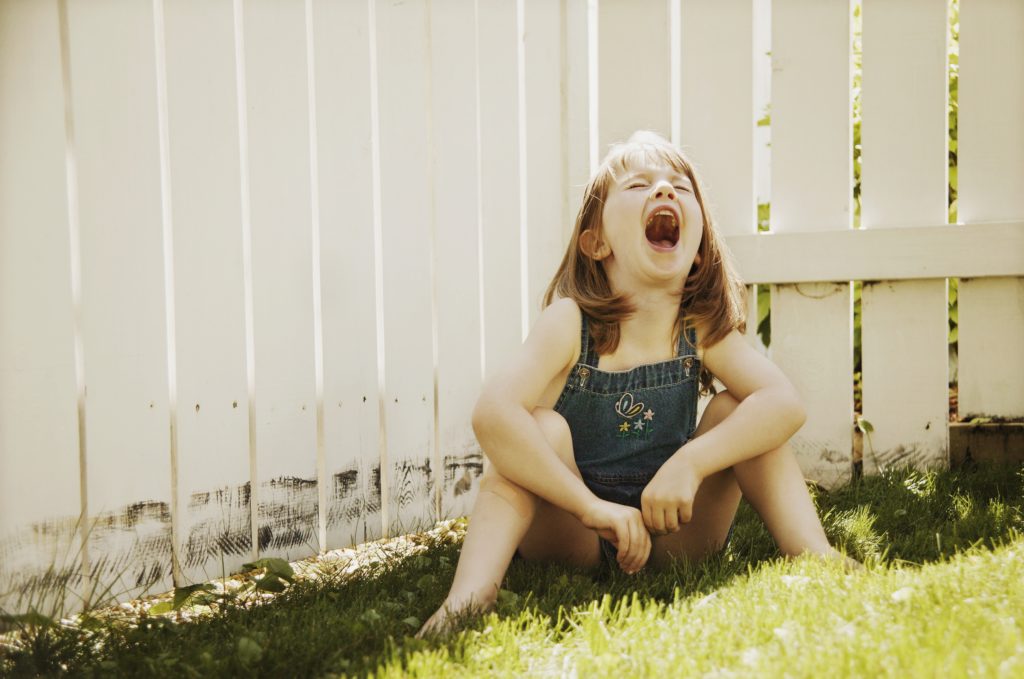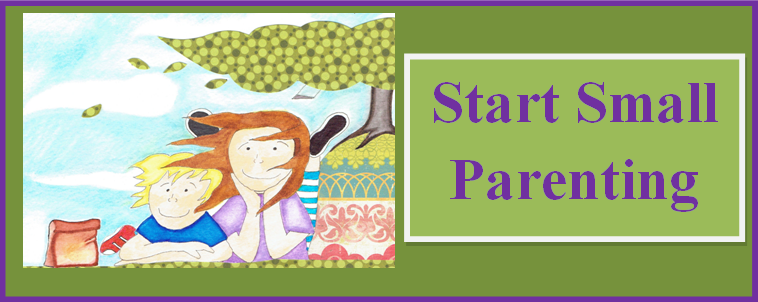 My son – all 6 lbs of him at birth – didn’t look like he’d ever have a tantrum. And we were pretty lucky. They were few. But those were enough to send me scrambling for ways to get back in my groove.
My son – all 6 lbs of him at birth – didn’t look like he’d ever have a tantrum. And we were pretty lucky. They were few. But those were enough to send me scrambling for ways to get back in my groove.
What can cause a tantrum?
- Not Being Understood
- Not Getting What they Want
- Tired, Hungry, Uncomfortable
- Not really knowing Who is in Charge
- Needs Attention
- Hard to Stop Once Big Emotion Starts
A Tantrum is . . . A Good Problem
Tantrums are one of my favorite child behaviors because they can give us some good information about our child and ourselves.
Fight/Flight/Freeze
Sometimes kids are so frustrated by their inability to be understood that a tantrum develops. When Big Emotions take over, they are usually in some form of fight/flight/freeze and not in a place of connection. Stress hormones like adrenalin, cortisol, and norepinephrine need to dissipate. Sometimes this takes time before you can even suggest movement as a way to move the hormones through or some other engaging activity.
Pre-verbal Frustration
Toddlers generally understand more than they can express. An advantage my son had was the early gift of communication. We waved simple signs at him since birth. A squeezing fist for milk. All fingers brought together for more. We got our ideas from a sign language chart we’d been given at our baby shower. With a blend of open-mindedness and skepticism, we thought it couldn’t hurt.
Couldn’t hurt? There were amazing benefits! My son could tell us what he wanted – even before language kicked in. Something in the clarity of that simple act helped keep his frustration level down. It also reinforced his larger theme of need: my parents are listening to what I’m asking for.
Safe Place to Have Emotions
It has been essential that my husband or I never try to change my son’s emotions. Those are his to have and experience. When our son has a need or want, our role is to help our son determine his need, find ways to meet it if possible, and have a safe space to experience emotions of disappointment or frustration if meeting it isn’t possible. This was a process over time, especially helping him to find what strategies helped him to increase his emotional self-regulation. For example, while I like to take 5 deep breaths when I’m frustrated, he likes to take them while running in the yard. He also found that walking into another room and coming back helped him to refocus and change his state.
“If you cry, the answer is no.”
Young children often have not yet developed the tools to deal with disappointment. Their deep frustration at not getting what they want escalates into a tantrum. Around two years old, my son was able to speak simple needs. At this time, we kept repeating a kind of mantra to him when he cried for what he wanted: if you cry, the answer is no. It didn’t take long for him to see that we were serious. Now this didn’t mean that if he used his words to ask, that the answer would automatically be yes. He did know that at least his request would be considered. And, as parents, we knew we could make a better decision without the pressure of a screaming child. We would watch friends with much older children, crying for what they wanted even before they had heard the answer—a sure sign that they had made that style their habit. We also helped him understand that “crying instead of asking” was different than the kind of crying when one is physically hurt or dealing with an emotional upset.
Basic Needs
After the first night of being a new parent, it becomes clear that when basic needs aren’t met, small humans become frustrated. You can always do the check list – T? H? U? Ask yourself is my child: Tired, hungry, uncomfortable? A child who is dehydrated or coming down with a cold has less resources to handle anything and what might be dealt with calmly on another day is suddenly paramount to the world ending!
Needing Attention
Have you set aside some parent/child time yet today? Special Time is invaluable. Even though you may be with your child all day, there are often many distractions as the parent is pulled to multi-task. Witnessing and being present for your child – even 15 minutes a day of focused YOU and YOUR child time with no distractions – can help to meet the basic emotional needs of attention and love the child is craving. Set a timer for 15 minutes. Only 15 minutes? Of course, more is good, too, but the consistency of DAILY focused time will mean the world to your child. Don’t have 15 minutes at that moment? Try a HUG or a few minutes of focused attention.
Who is in charge of the family?
You are the natural authority. You are the adult and you make good choices. Over and over, children will test this to make sure they can really know it’s true. They need you to be in charge. This includes setting respectful limits. They also need you to respectfully include them in their learning.
Play the Violin
When the child has a Big Emotion and is in the midst of a tantrum or meltdown, she may refuse touch or interaction of any kind. It’s important that the parent make the separation between the child’s emotions and their own.
One way to do that is with this practice: Play the Violin.

If the emotions escalate and the child moves into the latter stages of a tantrum, the parent Plays the Violin. This is to be done if the child is out of control and won’t take touch, empathy, or suggestions. You may not play the actual violin. But if you do play an instrument, do that – or whatever your version of self-care is in that moment. It might be to vacuum, knit, read, draw, or clean nearby. It’s important not to stop your world.
Stay Close By. The key is not to disappear or abandon your child. Do not isolate the child. Let them know you will be close by and willing to help and support them when they are ready. You are a loving presence while the child moves through their emotions.
Keep the Environment Safe. Make sure the child won’t hurt themselves or anyone else. Sharp objects may need to be removed. Bring in soft objects like pillows. Or remove the child if the environment is not safe. Only remove yourself if the child is harming you.
Self-Care Tip. If the child is screaming, it’s okay to get out a pair of ear plugs and put them in while you Play the Violin.
While it seems that the stage of tantrums and meltdowns might last forever, know that your child is learning and growing with your guidance. While she might not be able to have that gap between impulse and action, every time you give her a chance to practice, her brain will be changing.
What I noticed about tantrums or other behavior that really gets a parent, is that if it works once, allowing the child the outcome they want, then why not try again? Children have a built in detector for these kinds of behaviors. A pattern interrupt allows the child to see that there is someone in charge, their world is safe, and they do not have to be in charge. Having to be in charge is a very scary place for a child, yet a role they will try to take on if they don’t feel someone else is filling it.
When my son got too frustrated and went into physical agitation or a tantrum, I would “Play the Violin.” I would make sure he was safe (usually somewhere on the floor.) I stayed close by doing something I liked or needed to do: reading, knitting, vacuuming, playing the guitar (or violin .) We let him know periodically that he was safe and loved— and let the tantrum run its course.
Reminders:
- If the child cries for what they want, the answer is always no.
- Think of a tantrum as time for yourself.
- Remind the child that they are safe and loved.
- Stay close by, but do your own thing.
- If you are sound sensitive, use ear plugs.
There are great benefits for all involved as you move through this child behavior. The child will develop more self-control, which will feel good for them. And, as a parent, it’s a great feeling to help your child move more smoothly through what can feel like very difficult waters to navigate.
If you have a strategy you’d like to share, please do so. Or maybe a question. I love to hear your comments. Just pop one in the box below.


My daughter – who is now 17 – used to to throw loud & long tantrums when she was 2 or 3. I play guitar, and as soon as she started a tantrum, I would sit in the room she was in and start playing my guitar. I didn’t sing, I just played. After a minute or two of me playing guitar, she would stop screaming & crying, and sit & calmly listen to the guitar. I would play for about 20 minutes, then I’d stop playing & talk to her about something not related to the tantrum. This technique also worked years later when we got a dog who would not go to sleep at night & prowled the house. I’d sit on the floor & play guitar, and the dog would lie down & go to sleep. My kids are now teenagers, and my dog is 12. I still play guitar, but no one pays any attention anymore.
Awww. 🙂 You might have to break out an electric guitar. The power of music is incredible. I love your response because it uses that power to soothe and to provide a sense of “all is well, all is safe.” Not to mention the benefits of modeling your love of music. Thank you!!
This is SO great Annie. It was much easier to hold the line w/ tantrums w/ our first child and not give in to the tantrum. Gotta say — with our second child this isn’t quite so. Many more times she got what she wanted when she cried .. especially if both kids were losing it. tantrums are less the “flavor” now — but power struggles sure are! I sure appreciate the reminders here! : )
That’s a great post!!!!!
I am sometimes guilty of allowing my OLDER students to have tantrums:) especially the ones coming from difficult socio-economics and needing the teacher’s attention. This post helped me revisit what I might be doing wrong with some problematic students in my program and made me think about ways I could change it.
I love that you provide solutions and as always, look to solve the problem while still allowing the child to feel safe!
Maria